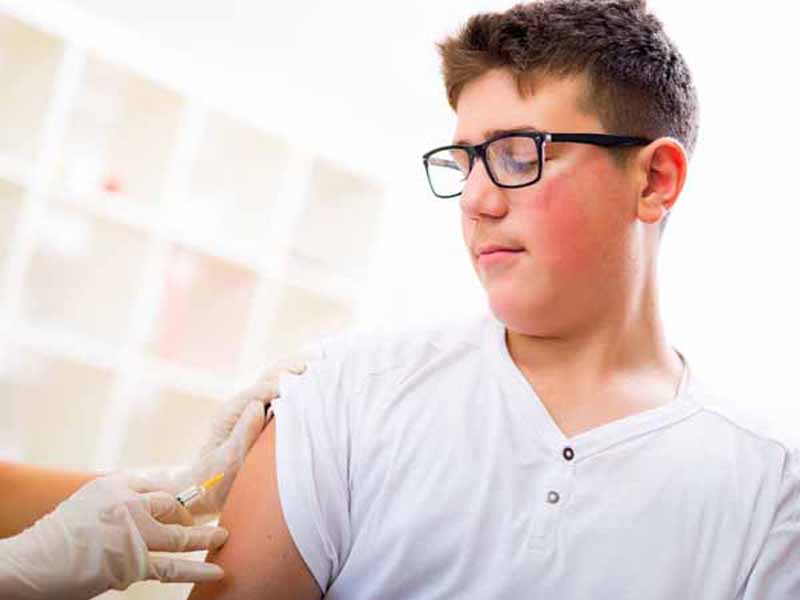CDC Underscores Need to Boost HPV Vaccination Coverage
Dual Reports Highlight Vaccine's Value in Cancer Prevention
August 29, 2019 04:49 pm News Staff – According to CDC data for 2012-2016, of the annual estimated 34,800 cancers attributable to HPV, 92% were linked to HPV types included in the nine-valent HPV vaccine and could have been prevented if HPV vaccine recommendations had been followed.
That's according to a CDC Morbidity and Mortality Weekly Report released Aug. 23 that analyzed data from the agency's National Program of Cancer Registries and the National Cancer Institute's Surveillance, Epidemiology and End Results Program to determine the national incidence of HPV-associated cancers and estimate the annual number of cancers attributable to the HPV types in the current vaccine.
Among those annual estimates, the most common cancer was oropharyngeal cancer (12,600), followed by cervical (9,700), anal (6,000), vulvar (2,500), penile (700) and vaginal cancers (600). Of cancers attributable to the HPV types targeted by the vaccine, 59% percent occurred in females.
And because this report marked the first time these data have been available at the state level, CDC researchers were able to report that the annual estimated number of cancers attributable to the HPV types in the vaccine ranged from 40 in Wyoming to 3,270 in California.
Story Highlights
According to a CDC Morbidity and Mortality Weekly Report, among the estimated 34,800 cancers attributable to HPV each year between 2012 and 2016, 92% were linked to HPV types included in the nine-valent HPV vaccine and could have been prevented if HPV vaccine recommendations had been followed.
In another MMWR, the agency detailed data collected from the 2018 National Immunization Survey-Teen, which showed that little progress has been made in increasing HPV vaccination coverage among adolescents ages 13-17.
To support health care professionals in making effective recommendations, addressing parents' questions and concerns, and reinforcing the message that HPV vaccination is cancer prevention, the CDC offers some useful educational resources.
"A future without HPV cancers is within reach, but urgent action is needed to improve vaccine coverage rates," said Adm. Brett Giroir, M.D., HHS assistant secretary for health, in a news release. "Increasing HPV vaccination coverage to 80% has been and will continue to be a priority initiative for HHS, and we will continue to work with our governmental and private sector partners to make this a reality."
Teen HPV Vaccine Uptake Remains Slow
In a second MMWR released Aug. 23, the CDC detailed new data collected from the 2018 National Immunization Survey-Teen, which showed that little progress has been made in increasing HPV vaccination coverage among adolescents ages 13-17.
The data showed a 4.4 percentage point increase in HPV vaccination coverage with at least one dose among teen boys from 2017 to 2018 and only a 0.6 percentage point rise among teen girls for that period.
The CDC's Advisory Committee on Immunization Practices recommends all preteens receive an initial dose of HPV vaccine at age 11-12 to protect them before they are exposed to the virus.
According to the 2018 survey data, 51.1% of adolescents ages 13-17 had received all recommended doses of the HPV vaccine -- a 2.5 percentage point increase from the previous year.
The CDC also found that HPV vaccination coverage was higher among adolescents whose parents reported receiving a vaccine recommendation from a health care professional. Overall, 77.5% of parents reported receiving a health care professional recommendation for adolescent HPV vaccination; prevalence varied by state, ranging from 59.5% in Mississippi to 90.7% in Massachusetts.
Additionally, receipt of at least one dose of vaccine was higher among adolescents whose parents reported receiving a health care professional recommendation (74.7%) than among those whose parents reported not receiving a recommendation (46.7%).
"The HPV vaccine continues to be the best way to protect our young boys and girls from developing certain cancers, including cervical cancer," said CDC Director Robert Redfield, M.D., in the release. "This new data shows one in four parents who received a medical recommendation for the HPV vaccine chose not to have their child vaccinated.
"The HPV vaccine is safe, and we encourage parents to get their preteens vaccinated and take the next step to prevent their children from developing HPV-related cancer later in life."
Resources for Health Care Professionals
To support health care professionals in making effective recommendations, addressing parents' questions and concerns, and reinforcing the message that HPV vaccination is cancer prevention, the CDC offers some useful educational materials.
These resources include a "Talking to Parents about HPV Vaccine" handout; the agency's #HowIRecommend vaccination video series; and various materials to give to parents.
